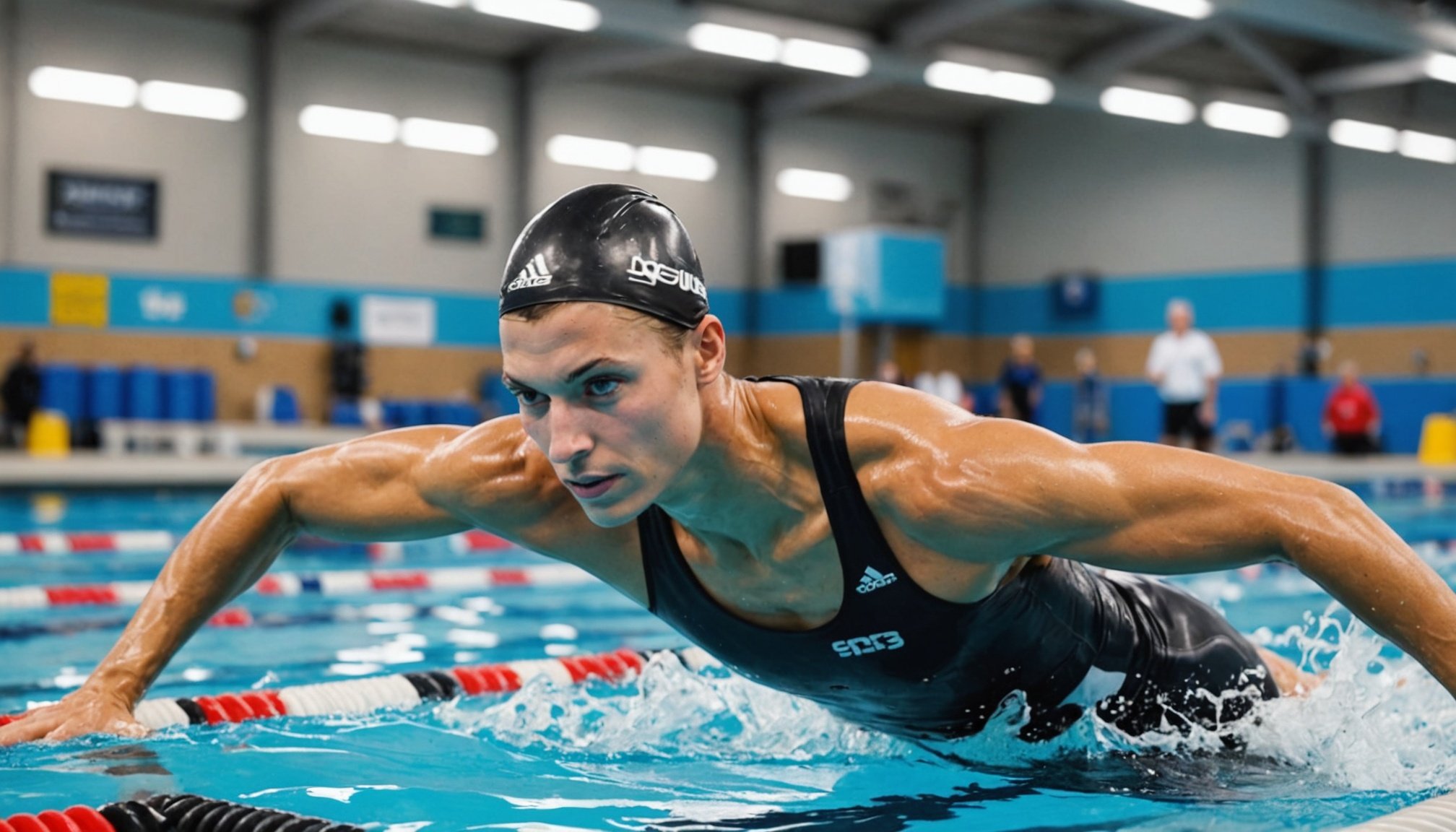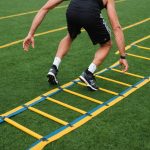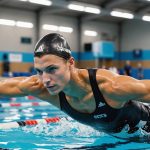Competitive swimming demands more than just time in the pool; it requires strength, agility, and endurance that can be developed on dry land. Incorporating targeted dryland training exercises not only enhances performance but also reduces the risk of injury. Unlock your swimming potential with exercises tailored for swimmers, focusing on core stability, flexibility, and overall strength. Discover the top dryland training routines that can give you the competitive edge you need to excel in the water.
Overview of Dryland Training for Swimmers
Understanding the significance of dryland training is crucial for enhancing a swimmer's performance.
In parallel : Boosting Stroke Power: Innovative Strategies for Sprint Kayakers
Importance of Dryland Training
Dryland training is a pivotal component of a swimmer's regimen as it focuses on building strength and improving overall athletic performance. By incorporating exercises such as strength training, flexibility routines, and cardiovascular workouts, swimmers can enhance their endurance and power in the water. This form of training is not just an add-on but a necessary part of preparing for competitive swimming.
Key Components of Effective Dryland Training
To ensure effectiveness, dryland training should include a mix of exercises that target different muscle groups. Here's a quick look at what it might involve:
Have you seen this : Unlock the fun: top gel blaster pistols for every gamer
- Strength training: Weightlifting and resistance exercises
- Flexibility routines: Yoga and stretching
- Cardiovascular workouts: Running or cycling
Benefits for Competitive Swimmers
Competitive swimmers benefit immensely from dryland exercises as they improve muscle strength, increase flexibility, and enhance endurance. These exercises help swimmers maintain proper form and reduce the risk of injury. As one coach aptly puts it, "Dryland training is the backbone of a swimmer's success outside the pool."
By integrating these components, swimmers can achieve a more balanced and effective training program, ultimately leading to improved performance in competitions.
Top Dryland Exercises for Strength
To build upper body strength effectively, swimmers should incorporate specific strength exercises into their routine.
Push-Ups
Push-ups are fundamental strength exercises that enhance upper body strength. They target the chest, shoulders, and triceps, crucial for powerful strokes.
Instructions:
- Start in a plank position
- Lower your body until your chest nearly touches the floor
- Push back up to the starting position
Benefits: Push-ups improve core stability and upper body strength, essential for swimmers. Variations like incline or decline push-ups can increase difficulty.
Pull-Ups
Pull-ups are excellent for resistance training, focusing on the back and biceps. They mimic the pulling motion used in swimming.
Instructions:
- Hang from a bar with palms facing away
- Pull your body up until your chin is above the bar
- Lower back down with control
Benefits: They enhance upper body strength and grip, vital for competitive swimming. Try weighted pull-ups for added challenge.
Medicine Ball Throws
Medicine ball throws are dynamic strength exercises that develop explosive power.
Instructions:
- Stand with feet shoulder-width apart
- Hold a medicine ball at chest level
- Throw it forcefully against a wall
Benefits: They improve coordination and resistance training. Use heavier balls to increase intensity.
Enhancing Flexibility through Dryland Training
Flexibility is a cornerstone of effective swimming, contributing to better strokes and injury prevention.
Importance of Flexibility for Swimmers
Swimmers need to maintain a high degree of flexibility to execute efficient and fluid movements in the water. Enhanced flexibility reduces the risk of strains and sprains, which are common in competitive swimming. By incorporating stretching routines, swimmers can improve their range of motion and overall performance.
Recommended Stretching Routines for Swimmers
A well-rounded stretching routine should include both dynamic and static stretching exercises. Dynamic stretching, such as arm circles and leg swings, is ideal before training to prepare the muscles. After training, static stretching helps in muscle recovery and maintaining flexibility.
- Dynamic Stretching: Arm circles, leg swings
- Static Stretching: Hamstring stretches, shoulder stretches
Dynamic vs. Static Stretching Before and After Training
Before training, dynamic stretching is crucial to activate muscles and increase blood flow. It prepares the body for the physical demands of swimming. Conversely, static stretching post-training aids in cooling down and prevents muscle stiffness.
A swimmer's regimen that balances these flexibility exercises ensures optimal performance while minimizing the risk of injuries.
Endurance Building Dryland Exercises
Enhancing a swimmer's endurance is essential for prolonged performance in the water. By focusing on endurance training, swimmers can significantly improve their stamina.
Burpees
Burpees are a full-body aerobic exercise that boosts stamina. They start with a squat, transition to a plank, and finish with a jump. This sequence enhances cardiovascular endurance.
Execution:
- Begin in a standing position
- Drop into a squat, placing hands on the floor
- Kick feet back into a plank
- Return to squat and jump up
Contribution: Burpees elevate heart rate, crucial for endurance training.
Jump Rope
Jump rope is a simple yet effective aerobic exercise for stamina improvement. It enhances coordination and cardiovascular health.
Execution:
- Hold handles with feet together
- Swing rope overhead and jump as it passes under feet
- Maintain a steady rhythm
Contribution: This exercise boosts endurance by increasing aerobic capacity.
Circuit Training
Circuit training combines multiple exercises with minimal rest, promoting endurance and stamina.
Execution:
- Select 5-6 exercises (e.g., squats, push-ups)
- Perform each for 30 seconds with 10 seconds rest
- Repeat circuit 3-4 times
Contribution: Circuit training builds endurance by maintaining an elevated heart rate.
Incorporating these exercises into a weekly regimen ensures balanced endurance training.
Safety Precautions and Common Mistakes
Ensuring safety in dryland training is essential for optimal performance and injury prevention.
Essential Safety Tips
Adhering to safety guidelines is crucial in dryland training. Always start with a proper warm-up to prepare your body. Use correct form and technique to avoid strain. Incorporate rest days to allow for recovery and prevent overtraining. A well-rounded approach ensures effective and safe training.
Common Mistakes Athletes Make
Athletes often overlook the importance of training safety. Common mistakes include neglecting warm-ups, using improper form, and skipping rest days. These errors increase the risk of injury and can hinder progress. By being aware of these pitfalls, athletes can tailor their routines for better results.
Mitigating Risks
To mitigate risks, focus on injury prevention strategies. Ensure exercises are performed with proper technique and gradually increase intensity. Pay attention to body signals and adjust workouts accordingly. This proactive approach minimizes the chance of injuries and enhances the effectiveness of the training regimen.
Checklist for Training Safety:
- Warm-up thoroughly
- Use proper form
- Schedule rest days
- Listen to your body
By integrating these practices, swimmers can enjoy a safer and more productive training experience.
Integrating Dryland Training into Swimming Regimen
Integrating dryland training into a swimmer's routine requires a strategic approach to achieve a balanced training plan. This integration ensures that both strength and endurance are developed effectively.
Creating a Balanced Training Plan
A well-rounded training schedule should incorporate both swimming sessions and dryland workouts. Start by identifying key areas that need improvement, such as strength or flexibility. A balanced plan might include three days of swimming and two days of dryland exercises, ensuring adequate rest and recovery.
- Monday: Swimming
- Tuesday: Dryland
- Wednesday: Swimming
- Thursday: Rest
- Friday: Dryland
- Saturday: Swimming
- Sunday: Rest
Frequency of Dryland Workouts
Determining the right training frequency is essential for optimal performance. Dryland training should be performed 2-3 times per week, allowing time for muscle recovery and growth. Adjust the frequency based on individual needs and competition schedules.
Monitoring Progress
Tracking progress is crucial for effective workout integration. Use a training log to record exercises, repetitions, and any improvements. Regularly assess performance to adjust the training schedule as needed. This approach ensures continuous development and adaptation to changing goals.
By carefully planning and monitoring, swimmers can effectively integrate dryland training into their regimens, leading to enhanced performance and reduced injury risk.











